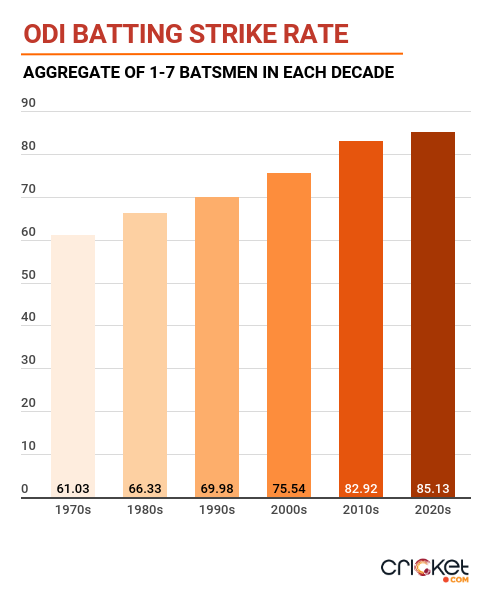 ANALYSIS
ANALYSISIt’s an interesting coincidence that Sir Vivian Richards made his One-Day International (ODI) debut on the first day of the inaugural men’s ODI World Cup – one of the greatest cricketers making his first appearance on the grandest of stages in a format where he’d go on to dominate for a decade and a half.
Richards, 23 at the time, did not make an impressive start – scoring 38 runs in four innings at the 1975 World Cup. It was a quiet beginning to one of the most exciting ODI careers of all time. 16 years later, he would retire with 6721 runs at an average of 47 and a strike rate of 90.20. Even in modern-day cricket, those numbers would be awe-inspiring. During Richards’ playing days, these were miles ahead of the rest.
The only batsman in the first 21 years of ODI cricket who came close to matching Richards’ statistics is Pakistan’s Zaheer Abbas, but it must be noted that the latter scored 4149 ODI runs lesser than the West Indian great. Until the end of 1991, Australia’s Dean Jones had a higher average than Richards but his strike rate was much lower.

This was, of course, an era when batting strike rates were not as soaring as they are these days. To give you an example, the aggregate strike rate of all batsmen batting in the top seven in the 1970s was 61.03. In the ‘80s, it increased to 66.33 and it has gradually increased through the decades as the graph below shows.

The only other batsman who scored 2500+ ODI runs until 1991 and had a strike rate of above 90 was India’s Kapil Dev. But the World Cup-winning captain averaged 25.72 with the bat. As a bowling allrounder, Kapil was a batsman who could get runs quickly but consistency with the bat wasn’t his forte. This shows how ridiculously good Richards was – he could score at a rapid rate and consistency wasn’t an issue for him at all.
In fact, to date, there are only six batsmen who’ve scored over 2500 ODI runs at an average of over 45 and a strike rate of over 90 – Richards, AB de Villiers, Virat Kohli, David Warner, Shikhar Dhawan and Jonny Bairstow. Every batsman here apart from Richards play(ed) ODIs in an era where T20 cricket has helped accelerate scoring rates in ODIs. The former West Indies captain, on the other hand, played his final international match in the format a good 12 years before the birth of the format.

As you can see in the graph above, the other five batsmen played/are playing when the aggregate strike rate of batsmen who bat between positions 1-7 is above 80. On the other hand, the same number when Richards played was 65.96, which means that his ODI career strike rate was 36.75% higher than the aggregate of top seven batsmen during his career – easily the highest among the six batsmen.
This just goes to show how ahead of his time Richards was – he was playing T20-era cricket long before the format had come to being as mentioned by former New Zealand cricketer and current commentator Ian Smith recently on ICC’s video series Inside Out.
“I believe Viv Richards would have made a go at cricket in any format in any decade. That’s why, I mean you look at his strike rate which was superior to anyone else’s at that time that is a T20 strike rate without even having that game in his mind,” Smith said. And who’s to argue?
When he retired, the Antigua-born cricketer also held the record for the highest individual score in an ODI innings – 189* against England at Manchester in 1984. Many consider it as the greatest ODI knock of all time. What made it so special was not just the score but the circumstances in which it was achieved.
Batting first, West Indies found themselves 102/7 and then 166/9 with Richards still out in the middle. In an unbeaten partnership for the final wicket that resulted in 106 runs – still a record for the highest 10th wicket stand in ODIs – his partner Michael Holding scored just 12. In fact, the second-best score in the West Indian innings on the day was 26 by Eldine Baptiste.
In the history of ODI cricket, 69.5% (189 in a total of 272) is still the highest percentage of runs a batsman has scored in a completed team innings.
There have been many world-class ODI batsmen since Richards and there will be many more in the future. But will anyone be as far ahead of their times as the legendary West Indian was? Only time will tell.